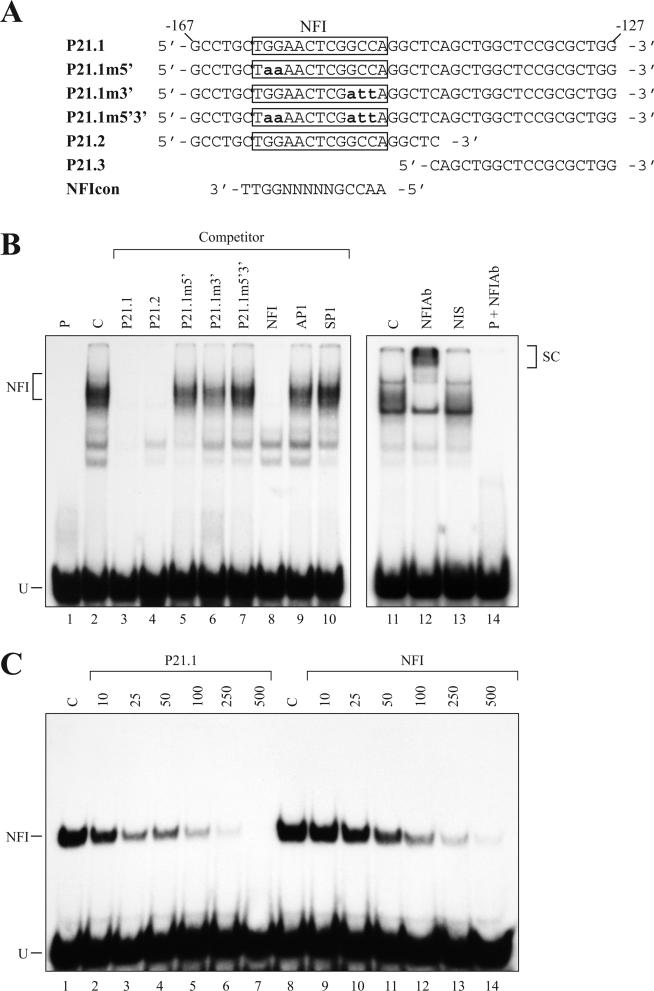Figure 2.
EMSA analysis of nuclear proteins from primary cultured HSFs interacting with the p21 NFI target site. (A) DNA sequence of the double-stranded oligonucleotides used as probes or competitors in the EMSA experiments. The consensus sequence for NFI is also indicated for comparison purpose (NFIcon). (B) The 5′ end-labeled p21.1 oligonucleotide was incubated with nuclear proteins (5 μg) from HSFs either alone (C; lane 2) or with a 150-fold molar excess of various unlabeled competitor oligonucleotides (p21.1, p21.1m5′, p21.1m3′, p21.1m5′3′, p21.2, NFI, AP1 and Sp1; lanes 3 to 10). Formation of DNA–protein complexes was then monitored by EMSA on a 6% native polyacrylamide gel. The position of multiple DNA–protein complexes corresponding to the recognition of the labeled probe by human NFI proteins is indicated (NFI). The p21.1 probe was also incubated with 5 μg HSFs nuclear proteins either alone (C; lane 11) or in the presence of either 2 μl of a polyclonal antibody directed against NFI (lane 12) or 2 μl of a mouse non-immune serum (NIS; lane 13). Formation of DNA–protein complexes was then monitored by EMSA as above. As an additional negative control, the probe was also incubated with the NFI Ab in the absence of nuclear proteins (lane 14). SC; supershifted complex resulting from the recognition of the NFI-p21 labeled probe complex by the NFI Ab. P: labeled probe with no added protein (lane 1). U: unbound fraction of the probe. (C) The p21.1 labeled probe used in B was incubated with 5 μg nuclear proteins from HSFs either alone (lanes 1 and 8), or in the presence of increasing concentrations (5- to 500-fold molar excesses) of unlabeled, double-stranded competitors bearing the sequence of either the p21 NFI site (p21.1) or that of the high-affinity, NFI prototypical target site (NFI). Formation of DNA–protein complexes was then monitored by EMSA as above. The position of the NFI complex is indicated along with that of the free probe (U).

